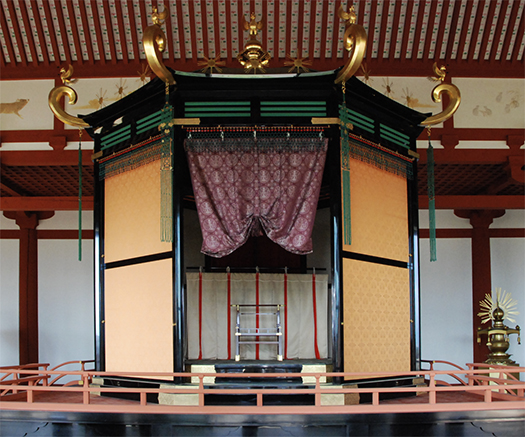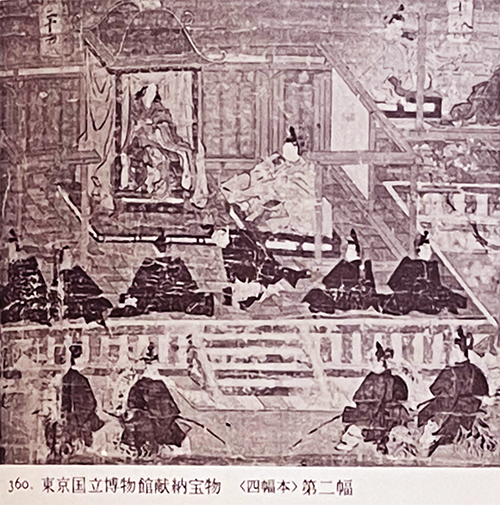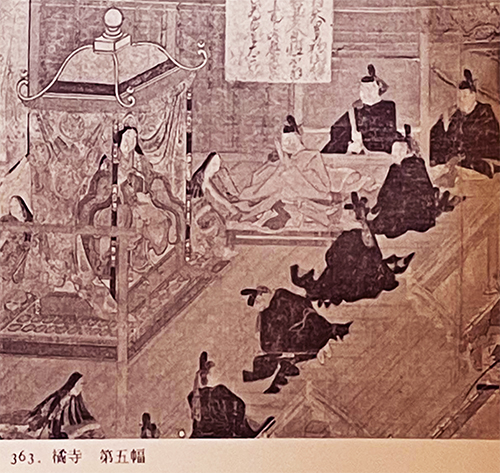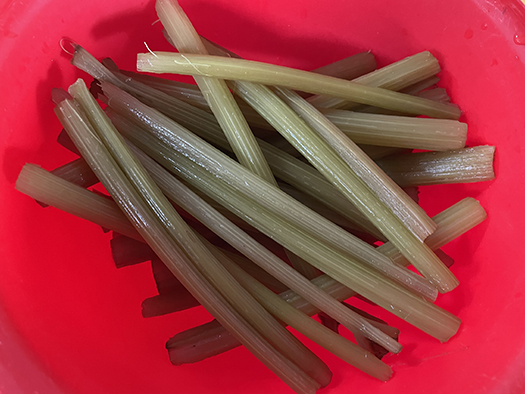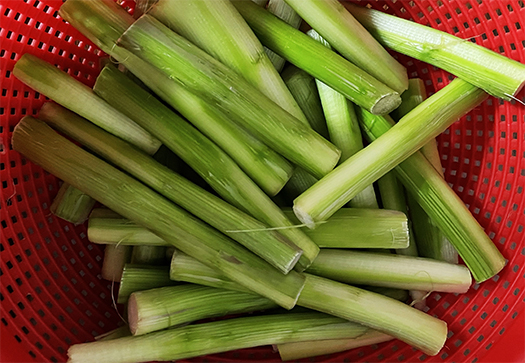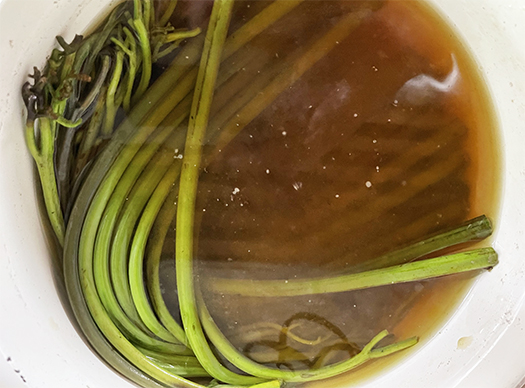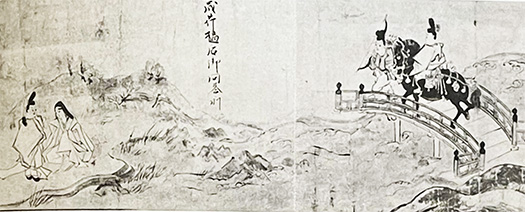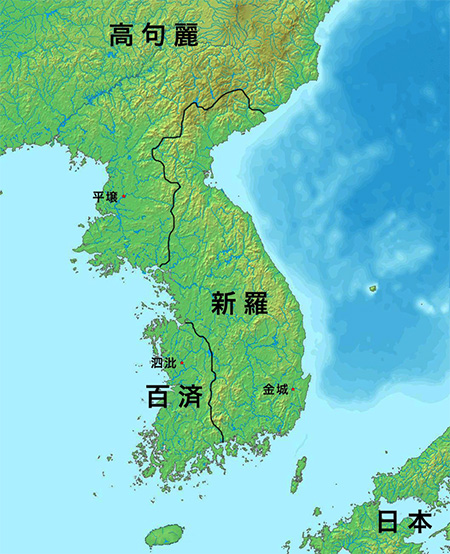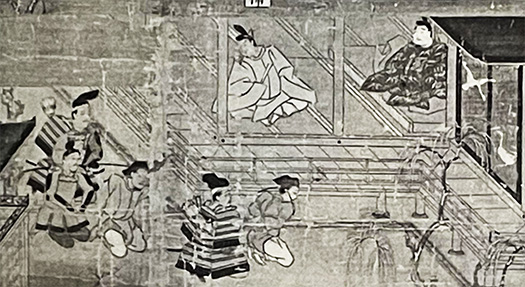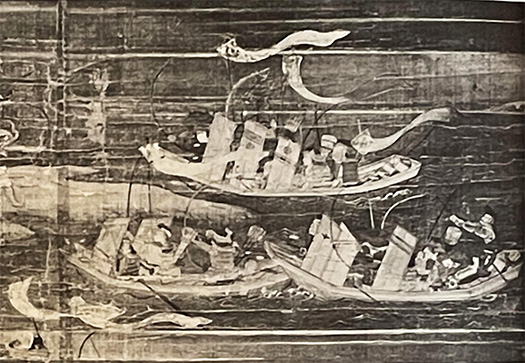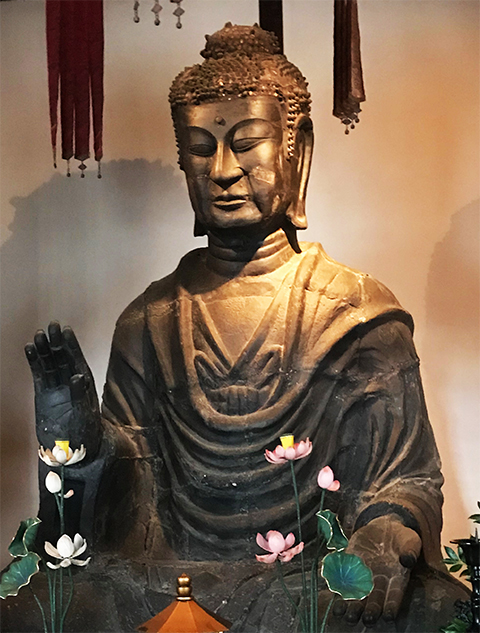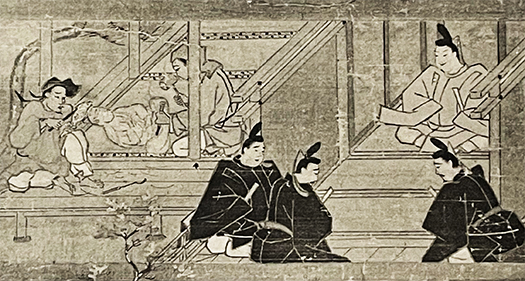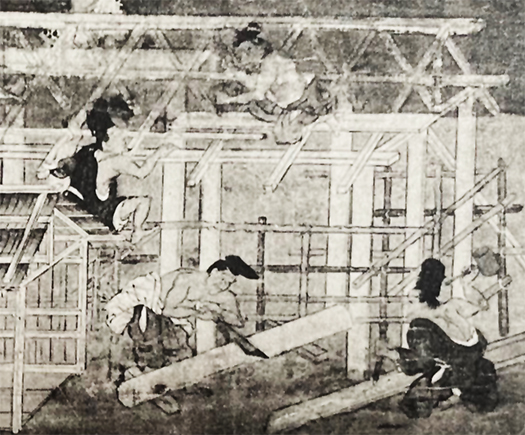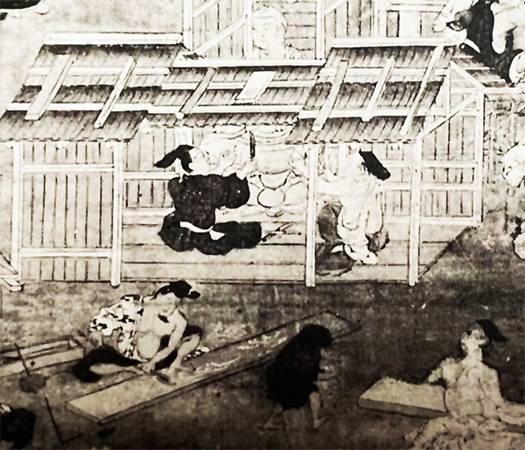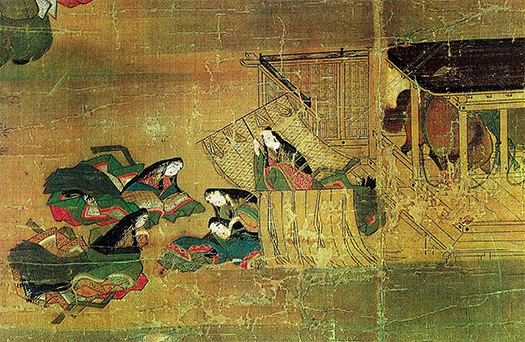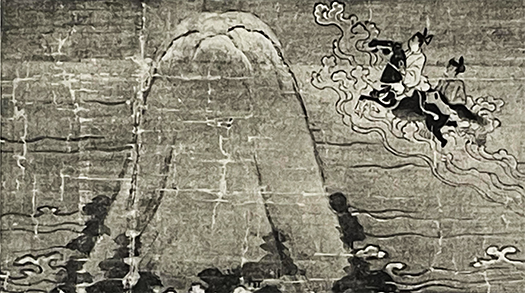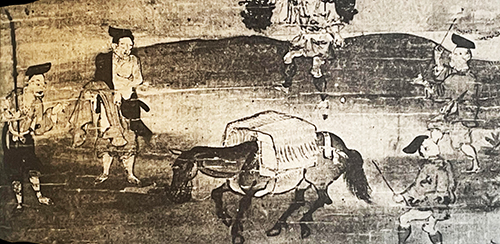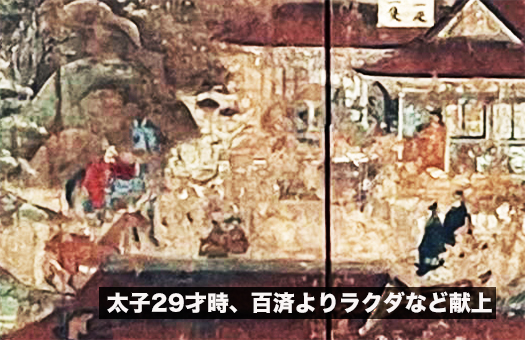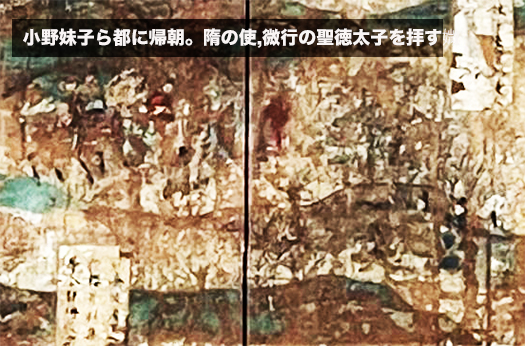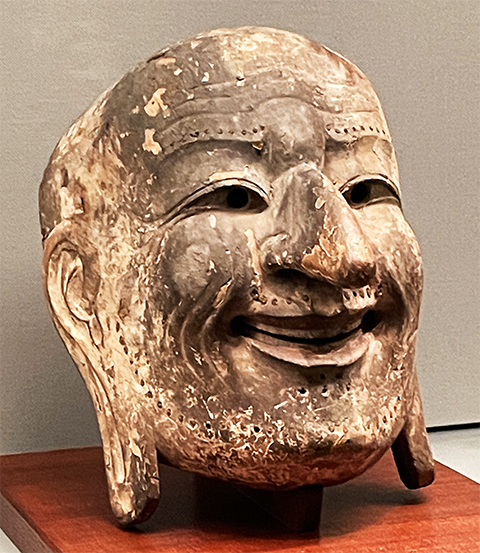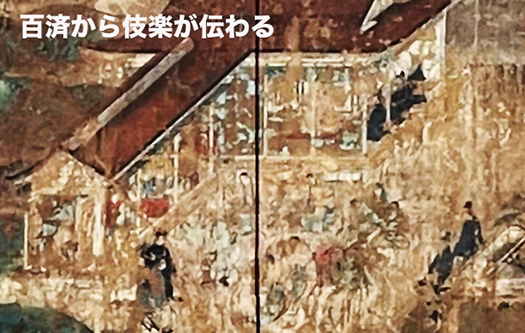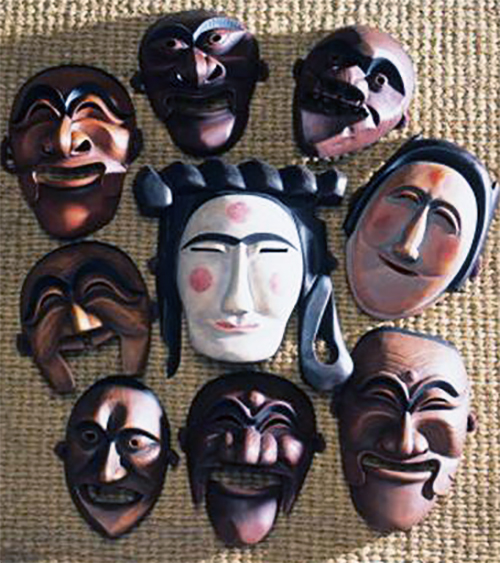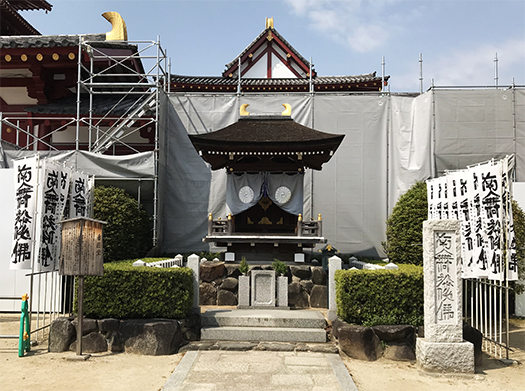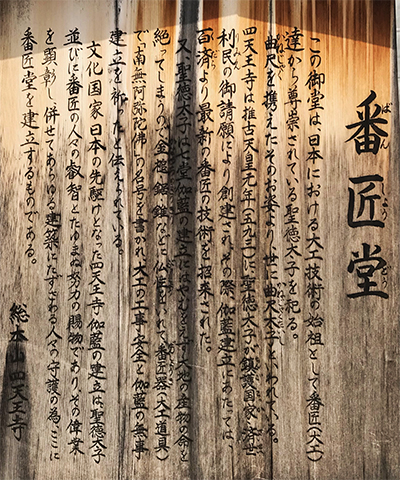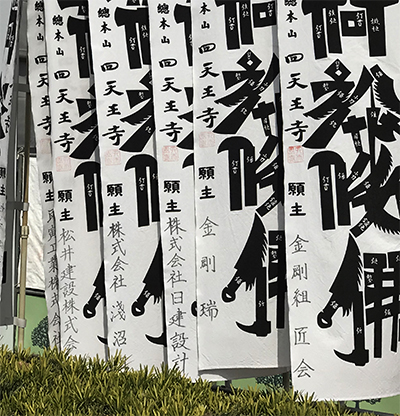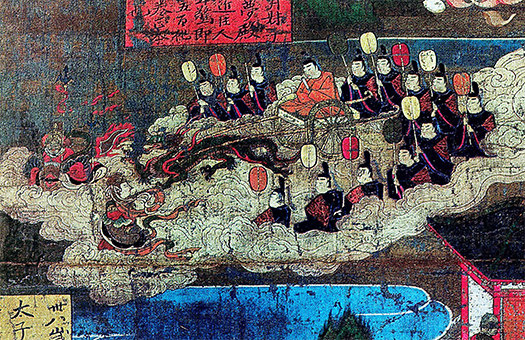

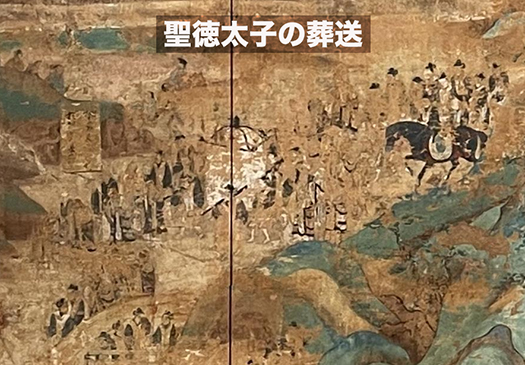
法隆寺宝物館「聖徳太子絵伝」記事、第17回目は最終回。聖徳太子さんの死とその後の国家宗教的な偶像化について。このシリーズの第一回はこちら→端正なモダニズム「法隆寺宝物館」探訪。
日本が仏教の広布を「鎮護国家」の基本に据えた、その創始に深く関わった皇族として摂政・厩戸王を長く敬愛し、そして「聖徳」という尊号を寄贈して長く崇敬し続けたことはわたしたちの歴史と精神性の重要ななにか物語っているのだと思う。通常のブログ記事テーマとはちょっと異質なテーマ選択でしかも全17回にまで及んでしまった。
日本建築でも特異に象徴化された存在である法隆寺の宝物としてながく保持され、それが皇室に献納されていまは東京国立博物館のなかでも「奥の院」のような位置に保存され、そのなかの中核的な宝物とされてきている。
現代でも高校の修学旅行先の最大公約数はやはり法隆寺なのだろう。この寺は仏教寺院というよりも、日本という国家の始原期・飛鳥の時代のいわば象徴のようなものとして、その建築が日本人に刷り込まれ続けてきたといえる。
そういった全体としての国家意識・宗教心の定着に聖徳太子が果たした役割は巨大。日本津々浦々に建設され維持され続けた仏教寺院、日本仏教にとっては、かれの存在はキリスト教におけるイエスキリストのようだったともいえる。この国で仏教が排斥もされず根付き続けたことの根拠として、仏教側では繰り返し、その事跡を広布し続けてきた。
622年にかれが死んで以降、たぶん個人の記録としては日本史ではじめて「絵伝」というような事跡紹介が制作され続けた。権力機構としての皇室にとってもこうした人物の事跡が正統性の根拠としてながく機能し続けてきたことは疑いようがない。かれの生きた事跡とともに、死後の象徴化も奇跡的。
聖徳太子は愛し続けた妃とほぼ同時に世を去った。葬送には天皇も参加したとされる。
いちばん上の絵はかれが空想の乗り物に乗って「前世で残した」経文を小野妹子に持ち帰らせた中国・叡山にまで乗っていくありさまを表している。日本国家では自身の権力基盤を宗教権威にまで高めてきた状況を物語っている。
民族のDNAの純粋化というようなものは日本のような島国国家にはあり得るのだろう。大陸国家ではあり得ないような民族的心性のようなものが存在している。十七条憲法の最初に「和を以て貴しとなす」と宣命したことは、その後の日本民族にも刷り込まれていったのだと思う。こういった人物に仮託されたものについて、今後も考えて見たいなと思っています。
English version⬇
The Death and Idolization of Prince Shotoku: The Gallery of Horyuji Treasures-17
Japanese history may have utilized the traces of this man to the nation’s own “religiosity”. The deeply penetrated “faith” of Prince Shotoku. …
The 17th and final article in the Gallery of Horyuji Treasures, “Shotoku Taishi Eaden. It is about the death of Prince Shotoku and his subsequent idolization as a state religious figure.
The fact that Japan has long held in high esteem the regent King Umato-oh as a member of the imperial family who was deeply involved in the founding of Japan, which placed the spread of Buddhism as the basis of its “state of tranquility and protection,” and that he donated the honorific title “Shotoku” to Japan and continued to be revered for a long time, tells us something important about our history and spirituality. This is a rather unusual theme for a blog post, and it has been covered in a total of 17 articles.
It has been kept as a treasure of Horyuji Temple, which is a unique symbolic existence in Japanese architecture, and it has been presented to the Imperial Family, and now it is kept in the “inner sanctum” of the Tokyo National Museum, where it is regarded as the core treasure.
Even today, Horyu-ji is probably the most common destination for high school excursions. This temple is not so much a Buddhist temple as a symbol of the Asuka period, the original period of the Japanese nation, and its architecture has been continuously imprinted on the Japanese people.
Prince Shotoku’s role in the establishment of such an overall national and religious consciousness is enormous. For Japanese Buddhists, his presence was like that of Jesus Christ in Christianity. His presence in Japan was like that of Jesus Christ in Christianity, and his presence in Japan has been repeatedly publicized by the Buddhist side as evidence that Buddhism has not been ostracized and has continued to take root in this country.
After his death in 622, the first personal record of his life, perhaps in Japanese history, was produced in the form of a “pictorial biography” of the event. There is no doubt that for the imperial family as a power structure, the traces of such persons have continued to function as the basis of legitimacy. In addition to the traces of his life, his posthumous symbolism is also miraculous.
Prince Shotoku died at about the same time as his beloved wife. It is said that the emperor participated in the funeral.
The last picture shows him riding in an imaginary vehicle to Mount Eizan in China, where he had Ono Imoko bring back a sutra he had “left behind in a previous life. It tells of a situation in which the Japanese nation has elevated its own power base to religious authority.
The purification of ethnic DNA is possible in an island nation like Japan, but not in a continental nation. There exists a kind of ethnic mentality that is not possible in a continental nation. I believe that the first sentence of the Seventeen-Article Constitution, which proclaimed that “harmony is the key to nobility,” was imprinted on the Japanese people in the years that followed. I would like to continue to think about and look at what was hypothesized in these figures.
Posted on 6月 15th, 2023 by 三木 奎吾
Filed under: 歴史探訪 | No Comments »


